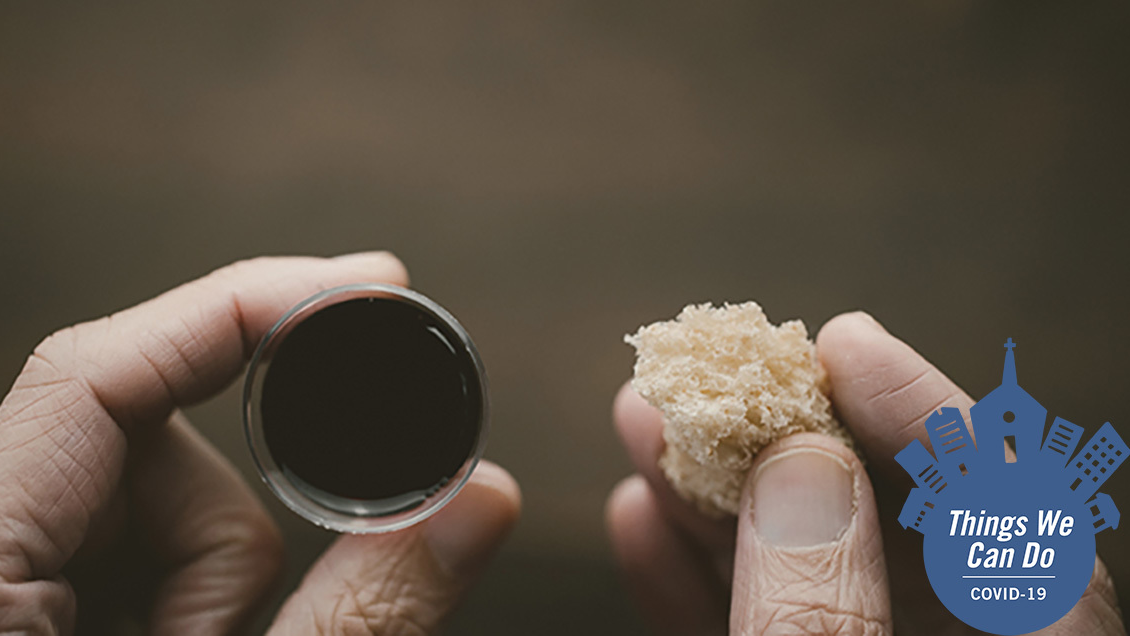
By John W. Coleman
Numerous displaced congregations—unable to gather in their sanctuaries—are increasingly worshiping online during the coronavirus pandemic. But many see first Sundays as a sacramental challenge. April 5, for example, is not only Palm Sunday but also the first Sunday of the month, when most churches typically celebrate Holy Communion together.
The dilemma for many is how to celebrate Communion correctly: with elements consecrated by an elder or licensed local pastor and received by worshipers gathered together in one place. While churches like Royersford UMC plan to deliver packaged, consecrated, individual elements to members’ homes, in bags hung on doorknobs, others may allow members to come pick up their packaged bread and grape juice (in lieu of wine), as long as they maintain their physical distance from one another to avoid spreading the virus.
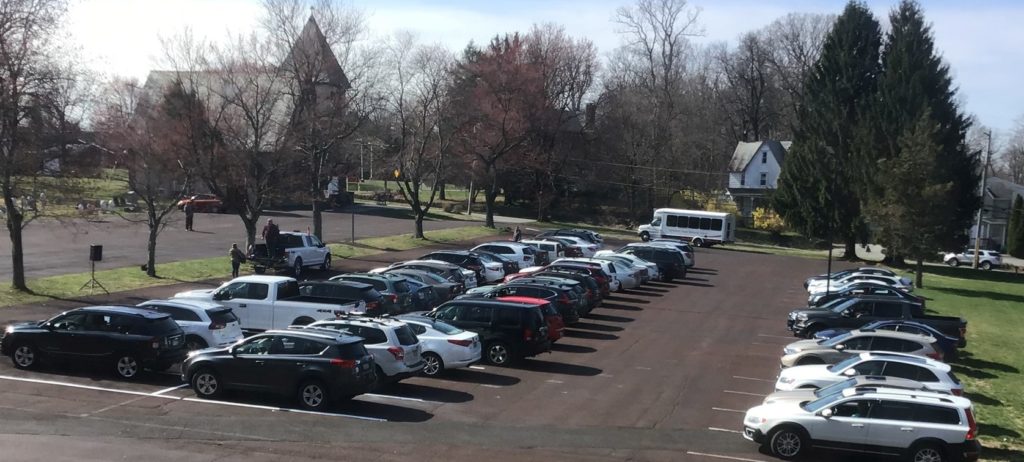
Drive-in worship for motorists
Among the latter group may be churches that are trying drive-in worship, where motorists come worship in their vehicles by listening to preaching and music from an outdoor “stage.” Jarrettown UMC in Dresher has done it for the past two Sundays, welcoming about 90 attendees (and two dogs) in its first attempt, March 22.
“Windows were rolled down to hear the inspirational sermon led by Pastor Bob Strauss,” reported member Lisa Durst-Hestnar. “Beautiful, spiritual music was played by the praise band leader. During these difficult times, Jarrettown Church found a safe way to worship together.”
Across the country, some churches are doing drive-in worship, but with sound transmitted and heard over vehicle radios, thanks to portable, outdoor FM antennas. The antennas cost about $100 online and can transmit signals about 100- 200 yards.
It’s an old, once-popular, outdoor worship idea resurrected for new uses in a time of need. Learn more about it by reading several recent articles:
Living Hope Church hosts drive-in church during COVID-19 outbreak
Churches Reconsider Drive-In Worship Faced with COVID-19 quarantines and new rules for social distancing, some pastors are serious about reviving the 1950s fad.
Drive-in Church Brings People Together in Times of Isolation
Coronavirus: Honks instead of hallelujahs as Orange Park church conducts drive-in service
Note—Bishop Peggy Johnson wrote in a recent letter to churches: As we continue this journey during the time of the Coronavirus, I want to remind our churches and pastors to obey the ordinances of your state. All drive-through events are being discouraged in some states now
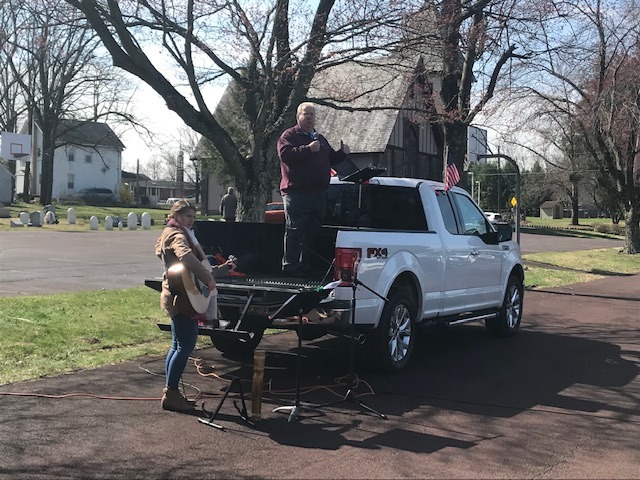
Online Communion discouraged, love feasts encouraged
Most church authorities advise against—and some vehemently denounce—the practice of consecrating and receiving Communion elements online as a dispersed Body of Christ. Yet, for some, in this time of pandemic separation and stay-at-home orders, necessity may be the mother of contravention.
Bishop Peggy Johnson, in her recent essay, “Thoughts about Holy Communion in the Midst of Coronavirus,” cited This Holy Mystery: A United Methodist Understanding of Holy Communion and a 2013 advisory from the UMC Council of Bishops to discourage churches from doing “cyber Holy Communion.” But she added, “Now we are in an unusual time in the life of the world, in which people are seeking connection with and through the Lord’s Supper, and are not able to gather in person.
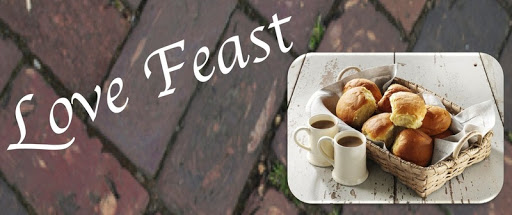
“It would be my wisdom that we consider practicing the Wesley Love Feast in lieu of Holy Communion,” she advises, while offering several alternative love feast liturgies. “However, if the pastor feels a strong movement of the Spirit that Holy Communion should be offered through online means, I leave that to their discretion and discernment. Our goal is to always offer the love and grace of Jesus Christ; but this decision must be made prayerfully and online Communion should be discontinued when we can gather again.”
(Read also “Grace Upon Grace: United Methodism, Holy Communion & Social Isolation” another, more conservative view offered by Dr. Ryan N. Danker, noted seminary professor. Both essays can be found on our Coronavirus Ministry Response webpage, in the Worship & Communion section.)
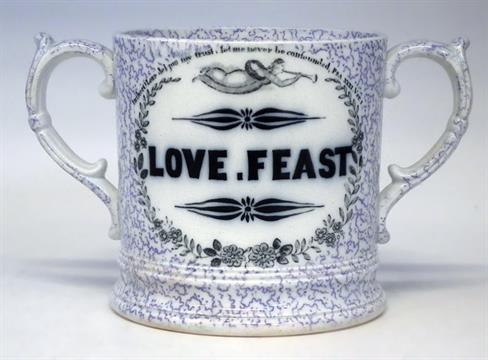
The Love Feast, or Agape Meal, offered on pages 581-584 in the UM Book of Worship, is “a Christian fellowship meal recalling the meals Jesus shared with disciples during his ministry and expressing the koinonia (community, sharing, fellowship) enjoyed by the family of Christ.
“Although its origins in the early church are closely interconnected with the origins of the Lord’s Supper, the two services became quite distinct and should not be confused with each other. While the Lord’s Supper has been practically universal among Christians throughout church history, the Love Feast has appeared only at certain times and among certain denominations.”
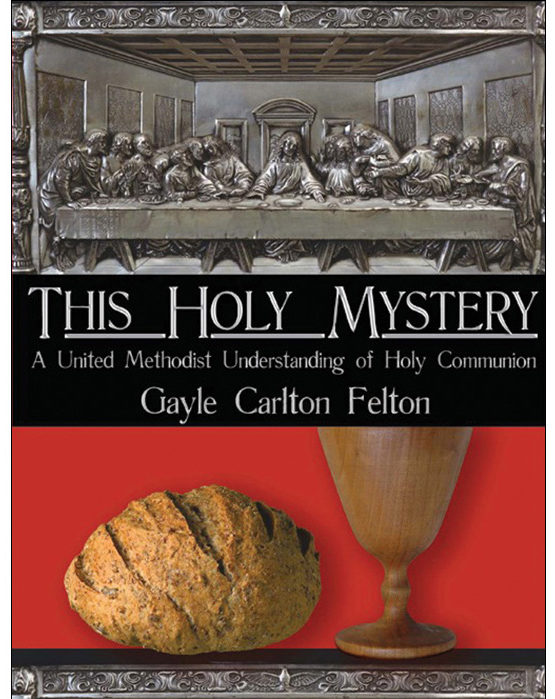
Methodism’s founder John Wesley learned it from the Moravians, and it became popular among early Methodists in England and America. That popularity waned over the decades; but the love feast tradition has been revived and used more often in recent years in local churches and both smaller and larger gatherings.
Love feasts are more informal than Communion rituals. They may include prayers, testimonies, praise, homilies, Scripture reading and singing of hymns. But they do not entail consecration of the bread and “wine,” and any forms of bread and beverage may be used. They may also be ideal for online observances, as celebrants can join in the feast together yet apart in their respective homes.
Read also: The Online Communion Dilemma by Cynthia Wilson, Derek Weber, And Diana Sanchez-Bushong
Note: Please share with us how your church plans and celebrates Holy Communion and Holy Week this spring, during the pandemic restrictions against gathering for onsite worship.
